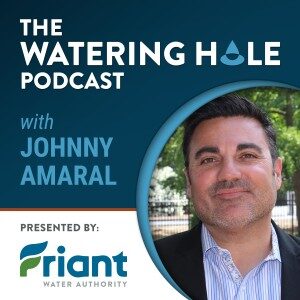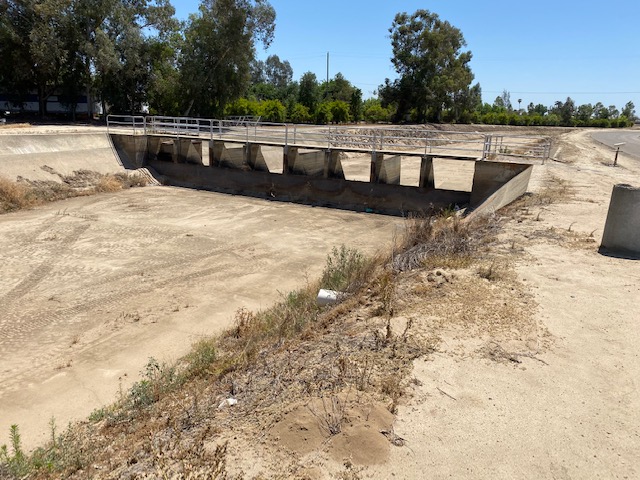 The Kaweah Delta Water Conservation District held its Tuesday, September 7, 2021, board of directors meeting in person and online with GoToMeetings. Before we get started I want to share something with you I received this morning from the California Farm Bureau Federation.
The Kaweah Delta Water Conservation District held its Tuesday, September 7, 2021, board of directors meeting in person and online with GoToMeetings. Before we get started I want to share something with you I received this morning from the California Farm Bureau Federation.
JOIN US SEPTEMBER 9th AT 11:00 AM IN FRONT OF THE CAPITOL
Ballot-Card Bill approved in legislature, Farm Bureau urges Governor Veto.
A bill that would replace secret-ballot elections for union organizing with a system known as “card check” is one step closer to the governor’s desk after clearing the California Senate.
Assembly Bill 616, authored by Assemblyman Mark Stone, D-Scotts Valley, would allow farm employees interested in organizing to submit a petition to the Agricultural Labor Relations Board with ballot cards signed by a majority of employees in the potential bargaining unit.
Farm Bureau President Jamie Johansson said he was extremely disappointed that the Senate approved the bill in late August.
“The fact is that there will be farm employees who show up to work one day only to find that they are part of a union, without ever having an opportunity to voice their own desire,” Johansson said. “They are already suffering from lost jobs due to drought, reduced paychecks due to the overtime law and now the Senate takes their right to vote away.”
Join us at the Capitol September 9th at 11 a.m. to make your voice heard! For more information: Peter Hecht 916/561-5550 or 916/719-2046
I called Assemblyman Stone’s office to get a response because I believe at the very minimum one should take a stab at getting both sides of a story. We’ll see if they respond before this is released into the wild. I’ve since received notice someone will call me back. If so then this portion may be altered.
As it happened I did get a return call from Stone’s office. I knew his home office was in Scotts Valley, up the hill from Santa Cruz. One of the things I find annoying is how (particularly the Bay Area) elected officials want to impose their opinions on others legislatively and we often have the urban elect sponsoring bills that impact agriculture. In this case Stone’s district, Assembly District 29 includes the western portion of Watsonville and Salinas, so there is some farm activity within his boundaries. His office told me the United Farm Workers sponsored the AB 616. They brought the bill to Stone, he thought it was a good idea and backed it. They told me Stone has strong ties to unions and sees this as a different way to vote and doesn’t think fraud will take place. Since I spoke with staff and not the Assemblyman there wasn’t the opportunity to find out just why Stone thinks there needs to be another way to vote, especially in light of the recent court ruling in favor of growers having say so over their private property. Nor did we talk about the workers who don’t want to be in the union, nor if the union is really still a viable representation of workers.
I did ask if Stone thinks this would be a good way for businesses in Scotts Valley to determine if their employees are unionized or not. But again I’m speaking with staff not the man himself, so no word on that.
I’m always interested in the unintended consequences of legislation. Much of what comes out of Sacramento is one size fits all. It could well be that AB 616 might be a better fit for the Salinas Valley than the Central Valley or the Imperial Valley. It may not be a good fit for anyplace. But we won’t know because of instead of testing it out within his district Stone and those who voted for it and unless the Governor vetoes it – who knows he’s fighting for his political life – have put this one size fits all on everyone in California’s ag sector.
After a little of GoTo’s messing with me I was able, thanks to Kathleen Halverson – one of KDWCD’s unsung heroes – help I tuned in to hear Chairman Don Mills call the meeting to order about 9:00am. General Manager Mark Larsen said the construction on the road in front of the office is expected to last only one year. The consent calendar was passed.
Water Report
KDWCD Water Master Vick Hernandez has a tough job on a year like this. He said things are dry which is about all he can say. Inflows on the Kaweah River are at an all-time low. Having better snow data sensors would be helpful. Speaking of, attorney Aubry Mauritson when hiking way up high at I believe Ferral Gap where there is a snow measuring station. She had photos of her and her family as well as the snow pillow and tower that transmits the data. Unfortunately while we could see the photos projected on the screen we couldn’t get the screen projected on the computers so we watched a picture of a photo and you couldn’t really tell what was captured on digital. There was talk about bears and mules but I couldn’t see. I was minorly bummed because I have a rare genetic anomaly that renders me amiable to watching other folks vacation photos. Hernandez said Lake Kaweah has never been drained due to low water supplies.
She had photos of her and her family as well as the snow pillow and tower that transmits the data. Unfortunately while we could see the photos projected on the screen we couldn’t get the screen projected on the computers so we watched a picture of a photo and you couldn’t really tell what was captured on digital. There was talk about bears and mules but I couldn’t see. I was minorly bummed because I have a rare genetic anomaly that renders me amiable to watching other folks vacation photos. Hernandez said Lake Kaweah has never been drained due to low water supplies.
Friant
Larsen said the 20 percent Central Valley Project Friant Division allocation is still holding. Engineer Dennis Keller said next year is the big question as it looks like the feds will end up owing 300,000 a/f to the state in San Luis Reservoir before the storage becomes balanced. This means there could be a call by the US Bureau of Reclamation on Friant water to meet Exchange Contractor supply demands.
Larsen reported there will be a special September 13th meeting to discuss the Friant Kern Canal repairs construction bid. Director Chris Tantau said the Bureau will have one engineering team to look at the technical side of the bids sans money. After the bids submitted are reviewed for their technical qualifications the costs are then evaluated. It doesn’t have to be a lowest cost award if the team feels the firm doesn’t have the strongest technical skill set.
Keeping the 20 percent allocation was a heavy lift this year. As Tantau said the system used to just call on Friant first when there were shortages. Keller talked a bit about the State Board’s curtailment orders and there is some push back taking place. I’ve seen notices of lawyers parachuting in to file suit.
Weather
Larsen said the contract for cloud seeding with Rick Stone could include another ground generator at Davis Ranch. The location has the correct uplift to pull the seeding material into the clouds as the currents approach the Sierra Nevada. The price has gone up for the proposed three-year contract. The increase is 30-percent due mostly to aircraft insurance according to Larsen. He said he did the math and that’s the big question, does it pay for itself? The three-year contract is more than $600,000 and depending on how you figure, the cost is $10-$20 per a/f, not so bad. Larsen felt the costs were inline with expenses. The Kings River watershed contractors are considering working with Stone on ground generation and it could morph into aircraft in the future and that will benefit Kaweah the same way as seeding on the Kern River watershed. Mills said Stone is about the only one of his kind left in the area. He also said Stone has been fair to his clients. The board agreed and now has a new contract.
Larsen said Stone is using comparison and contrast to determine the increase of precipitation cloud seeding provides. That will help collect more data on the subject. He also said they use seeding over the Great Planes to depress hail. Mills said the Kings River folks tried this in the past but broke down in discussions about how to divide the costs.
Construction Projects
Next Keller said there will be a concrete poor tomorrow on the Hannah Ranch project. This is a project that links the Friant Kern Canal to recharge on Hannah Ranch. He hopes to see much of the tie-in construction completed by the end of next month. There is still a good deal of earthwork to be wrapped up but the work is going well and meeting schedule projections. Summers Engineering has been approached about the dam portion of the project because this is a very similar situation to the McKay Point work they did. He also said there appears to be about the right amount of clay needed to complete the project without having to make any additional expenditures for that material. The board also approved a project payment on the new pipe that was made in Texas, shipped to Bakersfield and coated and is now on site.
projections. Summers Engineering has been approached about the dam portion of the project because this is a very similar situation to the McKay Point work they did. He also said there appears to be about the right amount of clay needed to complete the project without having to make any additional expenditures for that material. The board also approved a project payment on the new pipe that was made in Texas, shipped to Bakersfield and coated and is now on site.
District Objectives
Strategies to develop long-term objectives generate more interest during drought. But Larsen has been pretty proactive over the years. Larsen said about a month ago he was able to take a breather and do some planning. He wants staff and board to work together on establishing priorities and ranking goals. He submitted some items for the board to consider.
Larsen started with water supply saying CVP Class I water has been fairly reliable and Kaweah Delta has been able to sell some of it to neighbors in trouble. He said Class II is recharge but the Class I could be renegotiated with the Bureau for irrigation use within the district. Another option is to use it for disadvantaged communities Keller has identified for using Class I for water treatment. Keller said the City of Exeter has been ordered by the State Board to consolidate with Tooleville for domestic water. He also said the Bureau is setting aside 15,000-17,000 a/f of emergency water for M&I usage. Of course this surface supply will have to be figured into SGMA. The State Board isn’t helping by not providing funds to accomplish its goals for others.
The next goal Larsen mentioned is better management of wet years and flood flows. He said being able to quantify how much water is recharged and where it should go will give a better idea of how to manage the releases and when to make them. There are so many ways to set this up and prioritize the supplies it needs to be studied.
Larsen believes there needs to be a better groundwater monitoring system. Not all wells are created equal and production wells impact the surrounding areas with variability such as screen depths and run times and drawdowns. Monitoring wells are expensive and there may be other ways to increase data. Tantau asked if Kaweah Delta wants to be the groundwater monitors or should the GSAs be tasked with that. Greater Kaweah GSA General Manager Eric Osterling said Provost & Pritchard has developed a map that will be of good use in this area.
groundwater monitors or should the GSAs be tasked with that. Greater Kaweah GSA General Manager Eric Osterling said Provost & Pritchard has developed a map that will be of good use in this area.
Larsen said developing a better understanding of how water flows through the system is needed. What is the true channel capacity, the true recharge rates and related matters? This is going to help when discussing flood flow releases and Friant Kern Canal operations. This data is also a good selling point for the recharge and banking projects. Mills said he was at an ACWA meeting several years ago when he heard Madera ID’s former President Ron Pistoresi announce that everyone was a potential partner and that might be the approach for Hannah Ranch.
SGMA
Osterling was asked by Mills how the GKGSA is going to solve all the problems. Took him a while to respond but he said there is a good deal of coordination with the two other GSAs in the Kaweah Subbasin. GKGSA is also developing both monetary and volume figures for regional projects to bring the subbasin into sustainability. He thinks this will turn into a framework, at least a draft by the end of October for review. Everything surrounding the allocation work is now being helped by Land IQ and Hotspot Ag. Provost & Pritchard and Montgomery Engineering are working on the native calculations and how to accurately determine tiered volume. The GKGSA board meeting is next Monday and the committees will meet at the end of this month.
framework, at least a draft by the end of October for review. Everything surrounding the allocation work is now being helped by Land IQ and Hotspot Ag. Provost & Pritchard and Montgomery Engineering are working on the native calculations and how to accurately determine tiered volume. The GKGSA board meeting is next Monday and the committees will meet at the end of this month.
Geoff Vandenheuvel asked Osterling if there will be an allocation plan down to the level of the individual landowner and when will the landowner be able to see this. Osterling said it won’t be a blank canvas but the stakeholders committee will be involved and he’s been talking with a variety of players. He said the goal is to put something out there, not carved in stone and he does expect some criticism. Vandenheuvel said he recognizes all the challenges Osterling is going through but he reminded everyone it takes a while to get the information out there. Osterling replied he recognizes how important it is to get the information out but the dry year is dropping groundwater and approaching a critical level so the response has to happen quick. Two salient points made by these gentlemen.
The Next Meeting
The next meeting of the Kaweah Delta Water Conservation District’s board of directors will be October 5th. Mills called adjournment to the public portion of the meeting at 10:32am and they went into closed session for one potential legal case. That was that and go be good to each other.
DISCLAIMER OF RESPONSIBILITY; Waterwrights.net strives to provide readers and clients with the most complete, up-to-date, and accurate information available. Nevertheless, Waterwrights.net does not serve as a guarantor of the accuracy or completeness of the information provided, and specifically disclaims any and all responsibility for information that is not accurate, up-to-date, or complete. Waterwrights.net’s clients therefore rely on the accuracy, completeness and timeliness of information from Waterwrights.net entirely at their own risk. The opinions expressed in this report are those of the author and do not represent any advertisers or third parties.
clients with the most complete, up-to-date, and accurate information available. Nevertheless, Waterwrights.net does not serve as a guarantor of the accuracy or completeness of the information provided, and specifically disclaims any and all responsibility for information that is not accurate, up-to-date, or complete. Waterwrights.net’s clients therefore rely on the accuracy, completeness and timeliness of information from Waterwrights.net entirely at their own risk. The opinions expressed in this report are those of the author and do not represent any advertisers or third parties.
 ALL RIGHTS RESERVED. Copyright 2021 by www.WaterWrights.net/DAW
ALL RIGHTS RESERVED. Copyright 2021 by www.WaterWrights.net/DAW
Kaweah Delta Water Conservation District
2975 N. Farmersville Blvd.
Farmersville, California 93223
559/747-5601 KDWCD is part or the Greater Kaweah GSA DWR #5-022.11
Board of Directors
Don Mills – President, Chris Tantau – Vice-President, Ron Clark, Jimi Valov, Jeff Ritchie, Mike Chrisman & Brian Watte
Management
Mark Larsen, General Manager – mlarsen@kdwcd.com
Terry Stafford, Facilities Manager – tstafford@kdwcd.com
Debbie Vierra, Administrative/HR Coordinator – dvierra@kdwcd.com
Larry Dotson, Senior Engineer – ldotson@kdwcd.com
Shane Smith, Projects/Administrative Manager – ssmith@kdwcd.com
Office and Field Staff
Equipment Operators – Jesus Sandoval, Chris Bell
Water Master – Victor Hernandez
Office Assistant – Kathleen Halvorsen
Primary Consultants
Bruce George – Special Projects Consultant
Dennis Keller – Civil Engineer (Keller/Wegley Consulting Engineers)
Aubrey Mauritson – Attorney (Ruddell, Cochran, Stanton, Smith & Bixler, LLP)
From the Kaweah Delta website:
The Kaweah Delta Water Conservation District (KDWCD) was formed in 1927, under the provisions of California state law known as the Water Conservation Act of 1927, for the purpose of conserving and storing waters of the Kaweah River and for conserving and protecting the underground waters of the Kaweah Delta. Later the Water Conservation Act, as well as the purpose of the District, was expanded to include power generation and distribution.
The District is located in the south-central portion of the San Joaquin Valley and lies in portions of both Tulare and Kings Counties. The total area of the District is about 340,000 acres with approximately 255,000 acres located in the western portion of Tulare County and the balance, or 85,000 acres, in the northeastern portion of the Kings County.
The Districts lands are primarily agricultural in nature, although the cities of Visalia and Tulare constitute significant areas of urbanization. Farmersville is the other incorporated area. The population of the District is currently estimated to be in excess of 175,000 people with the principle crops being cotton, misc. field crops, deciduous fruit and nut trees as well as alfalfa.
Numerous public and private entities within the District’s boundaries divert water from the Kaweah River and its distributaries. Nearly all of the lands served with Kaweah River water also are served irrigation water from groundwater, primarily due to the erratic and relatively undependable nature of flow on the Kaweah River. All municipal and industrial water uses within the District are supplied from groundwater.
KDWCD and Tulare Irrigation District (TID), which lies entirely within the boundaries of the Kaweah Delta Water Conservation District, has a long-term contract with the federal Central Valley Project (CVP) for water from the Friant Division of the CVP. TID has historically received substantial quantities of CVP water surplus to the demands of the District which augment the Kaweah River supply.
The District and the Kaweah River groundwater basin have experienced long-term groundwater overdraft estimated in 2007 to be as much as 40,000 acre-feet per year. The District has performed multiple studies of groundwater data to determine the extent and volume of groundwater overdraft within its boundaries. There are currently over 40 recharge basins within the District covering approximately 5,000 acres. While KDWCD owns and operates many of these groundwater recharge basins, it does not provide water banking services for others.

































